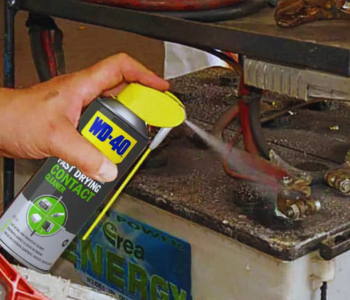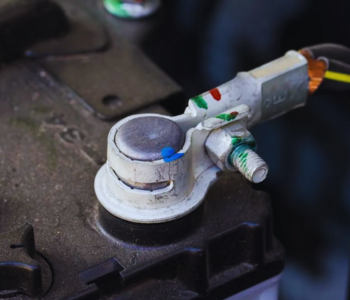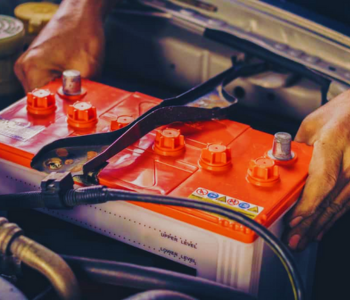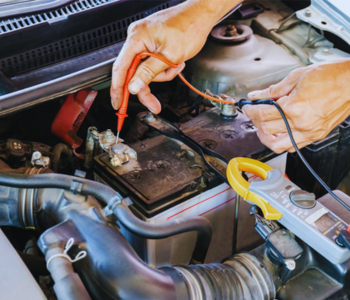
A car’s electrical system depends on the car battery’s connections. Car battery Terminals must be checked, cleaned and kept regularly to ensure that your car’s electrical system lasts long and works well. They ensure the electrical system is safe while letting the engine turn over, charging the battery, and distributing power.
Protecting car battery terminals is a simple yet crucial maintenance task that should not be overlooked. By ensuring proper electrical connections, preventing corrosion, enhancing battery lifespan, avoiding electrical shorts, and minimizing downtime and costs, you safeguard your vehicle’s electrical system and promote its longevity.
How To Protect Car Battery Terminals In 2023
To ensure the protection of car battery terminals, it is crucial to follow a set of simple steps like the application of a thin layer of petroleum jelly or terminal grease because it acts as a best way to be a protective barrier, to effectively prevent corrosion caused by moisture. Additionally, regular inspection and cleaning of the car battery terminals as this practice helps in maintaining a strong electrical connection and ultimately extends the life of the battery.
Problems occurring more commonly with car battery terminals

A number of things can mess with the links between a car’s battery and its electrical system. Knowing about these problems could make it easier for car drivers to find and fix problems.
Corrosion: Corrosion of the battery terminals is a common problem. Chemical processes cause a white or bluish substance on the terminals.
When rust gets in the way, it can hurt both the life of the battery and the quality of the electrical connections. Corrosion can be prevented and fixed by checking and cleaning the connections regularly.
- Vibrations and normal wear and tear can loosen and fall off battery connections
Loss of electrical contact due to loose connections can make it hard to start something, cause the power to go out, and cause other problems with the electrical system. Checking and tightening the battery terminals daily can keep the connection strong.
- Terminal posts on car batteries that are broken
The battery’s connection posts could get damaged or worn down because of tightening it too much, using the wrong tool, or letting it rust. Damaged terminal posts can make it hard to connect wires and cause the electrical system to work less well. If the problem seems severe, you may need to fix or replace the terminal posts.
- The broken cables that connect the battery terminals
This can make it hard for electricity to flow and cause problems with starting the electrical system or even electrical shorts. Battery wires should be looked at often, and any damaged ones should be changed immediately.
- At the ends of car batteries, there can be acid leaks
Overcharging, a broken battery case, or something else could cause this. Acid is corrosive, so if it gets on the car, it can eat away at the connections, nearby parts, and even the paint. If acid leaks are found, action must be taken immediately, and the battery may need replacing.
- If the connections of a battery are put on wrong, it could lead to several problems
If the terminals are not lined up, adjusted, or held in place properly, there may not be enough electrical contact, the connections may be weak, or the terminals or battery wires may be damaged.
- Terminal contamination
It happens when an electrical link’s positive and negative ends touch each other directly or indirectly. This could cause electrical devices to overheat, spark, or even catch fire. Cross-contamination can be avoided by covering the terminals, using insulating materials, and routing the wire correctly.
Suppose car owners know that problems can happen with the battery leads and do regular checks and maintenance. In that case, they can fix the problem immediately, keep good electrical connections, and make the battery last longer.
- How to keep car battery terminals safe
Now we’ll look at some good ways to keep car battery connections from getting rusty or having other problems.
- Maintenance and cleaning regularly
Regularly checking and cleaning the battery connections will free them from dust, dirt, and corrosion.
Follow these steps to make sure your ports are always clean:
- Take the battery cable off. Ensure the engine is off before you take the wires off the battery.
- You can use a mix of baking soda and water or buy a battery terminal cleaner. The use of a brush or an old toothbrush to scrub the connections to remove corrosion and dust is always helpful.
- First clean, then Dry. A plain paper towel or cloth to dry the ports well after you’ve cleaned them is required.
- After you clean and dry the terminals, you can put a small layer of petroleum jelly or a terminal protectant spray on them to keep them from rusting again.
The Role of Protective Covers for Terminals
Putting a rubber or plastic cover over the connections is an extra defense against the weather. They keep moisture, dirt, and other things from getting into the connections and causing corrosion. Make sure the covers are on tight and aren’t getting in the way of the terminal link.
- To stop corrosion, battery contacts are greased with dielectric grease
The battery connections are greased with dielectric grease to stop corrosion and moisture buildup. This grease protects the battery terminals from corrosion and makes it easy to disconnect the wires during regular maintenance. Dielectric grease, made of silicone, stops rust, corrosion, and moisture damage. The grease will help make electricity flow easier between the terminals and the wires with low resistance.
- The terminal covers with washers that prevent corrosion
Between the battery terminals and the connector wires, felt or metal washers often stop corrosion. These washers can soak up and neutralize corrosive substances. This makes corrosion less likely and extends the life of the connections.
Sprays and coatings that can be bought in stores have been made to protect battery connections. These things keep moisture and rust from getting into and hurting the connections.
- Check the amount of fluid in the battery
Some car batteries should have their fluid level checked often. If you think adding more fluid to the battery is the solution, use clean water. Keep the battery firmly in its tray so it doesn’t move around and possibly damage the terminals.
What usually drains the battery?

When the engine is turned off, it’s important to know that any electrical accessories still in use can drain the battery. If you unplug gadgets that aren’t used, the battery will be used slowly.
- Checking the Batteries
Check the voltage and charge level of the battery with a voltmeter or have a professional do it regularly to find problems as soon as possible.
Five common mistakes to avoid to keep the battery connections from getting damaged.
- Don’t connect lead and copper battery contacts directly to each other or other battery terminals. This could cause rust and damage to the terminals. You may need to use adapters or connectors if you want to connect different kinds of connections.
- Even though it’s important to ensure the links between the battery terminals are safe, it’s also important not to tighten them too much. Connectors should be tightened with care and force. If too much force is used, the terminals can break or get harmed, and the threads can be stripped.
- When handling battery connections or cleaning them, it’s important not to use too much force. Terminal posts and terminals can break or get damaged if handled roughly, and other parts can move around. Handle the connections carefully to keep them from getting worn out too quickly.
- Don’t Use Metal Tools on the Terminals: Do not use metal tools or items to touch either the positive or negative ends. When working near the battery, use tools that don’t conduct electricity and be very careful. A short circuit could cause sparks, electrical damage, or even harm to people.
- Damage or rust shouldn’t be ignored; if the terminals look worn or broken or there are any signs of corrosion, like a white or blue substance, you must move quickly. Time to Pay extra attention to these warning signs to avoid a dead battery, electricity problems, or trouble starting the car.
Can I use washers that stop corrosion to protect the connections on my car battery?
Most car battery connections have washers that stop corrosion. Batteries can leak acid onto the wires, and these washers will soak up the acid and make it harmless. Some of the things that are used to make them are felt and fabric. They help keep the connections from rusting, which makes them last longer.
What if I use something else instead of the brush to clean the battery terminals?
Choose a tool that doesn’t lose bristles or other things. A brush is made just for cleaning battery connections, but you can use any tool that isn’t rough and won’t scratch the terminals. For example, a small wire or old toothbrush can clean the connections well.
Should the battery wires be unplugged before dielectric grease is used?
You don’t have to take the battery wires off to use dielectric grease. The terminals can be greased while the wires are still in place. When you use oil, spread it out lightly and evenly to keep it from building up and ensure it makes good electrical contact.
Are there any special instructions for cleaning the battery cables on an electric or hybrid car?
Follow the manufacturer’s directions and suggestions when cleaning the battery terminals of a hybrid or electric vehicle. Most of these cars have high-voltage systems, and you could seriously hurt yourself if you don’t handle the connections carefully. It is always preferable to consult the owner’s manual or talk to a professional for safe maintenance methods specific to hybrid or electric vehicles.
Can I use something I made instead of the terminal protectant I got at the store?
Often, specialized terminal protectants are suggested for the best results. Some home remedies, like petroleum jelly or baking soda paste, might help, but they might need to be better than professional terminal protectants. When making things for sale, rust resistance, moisture resistance, and long-term security are considered.
Final Thoughts :

Safeguarding car battery terminals is vital to proper battery maintenance, ensuring optimal performance and longevity. Car owners can effectively shield their battery terminals from corrosion, moisture, and contaminants by adhering to recommended practices, such as regular inspection and cleaning, applying terminal protectants, and using dielectric grease and terminal covers.
Additionally, practicing caution during cable connections and adhering to safety measures adds more protection. By implementing these preventive measures, car owners can maintain reliable electrical connections, prevent starting issues, and extend the life of their car batteries.
More related articles :





